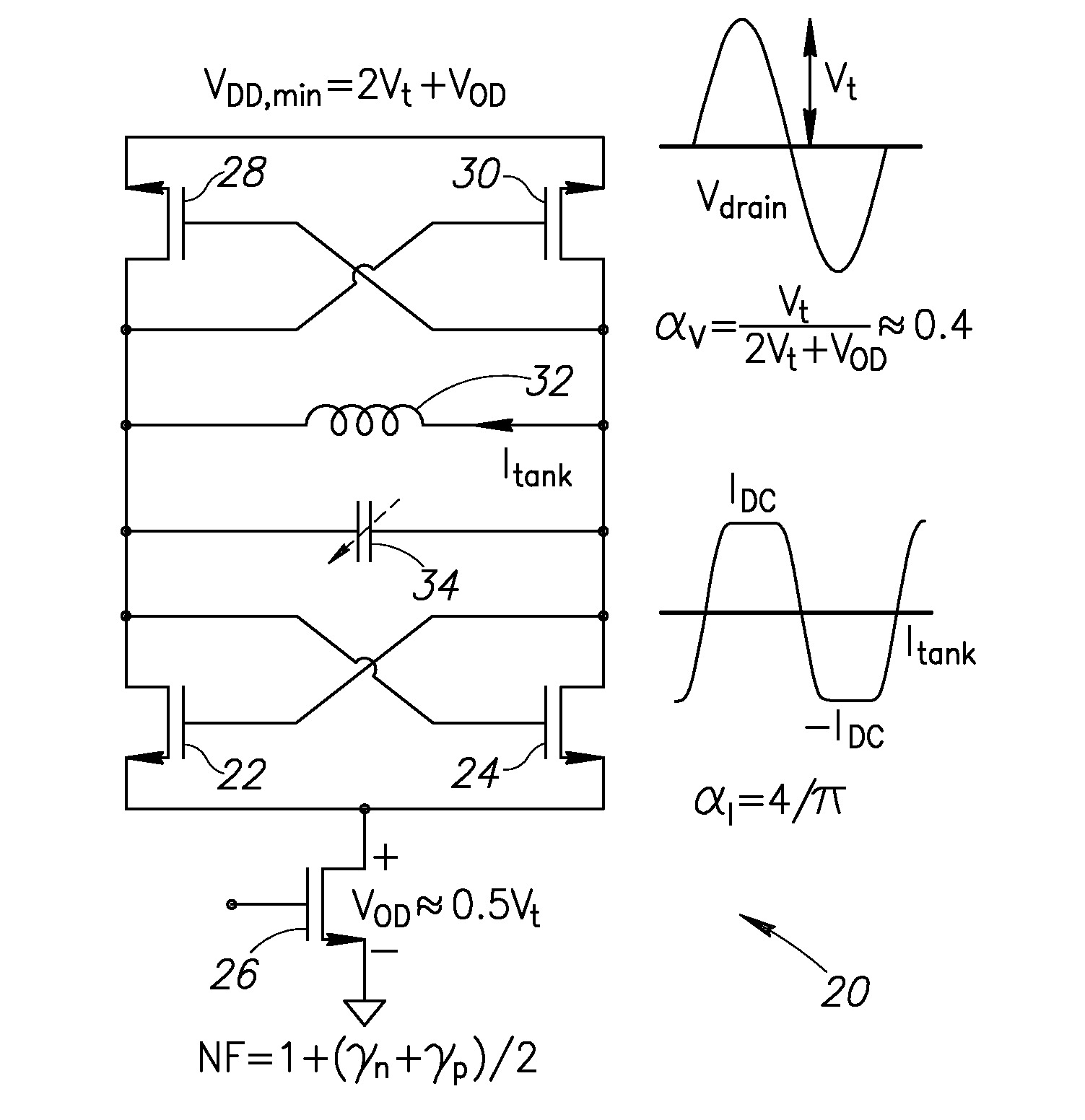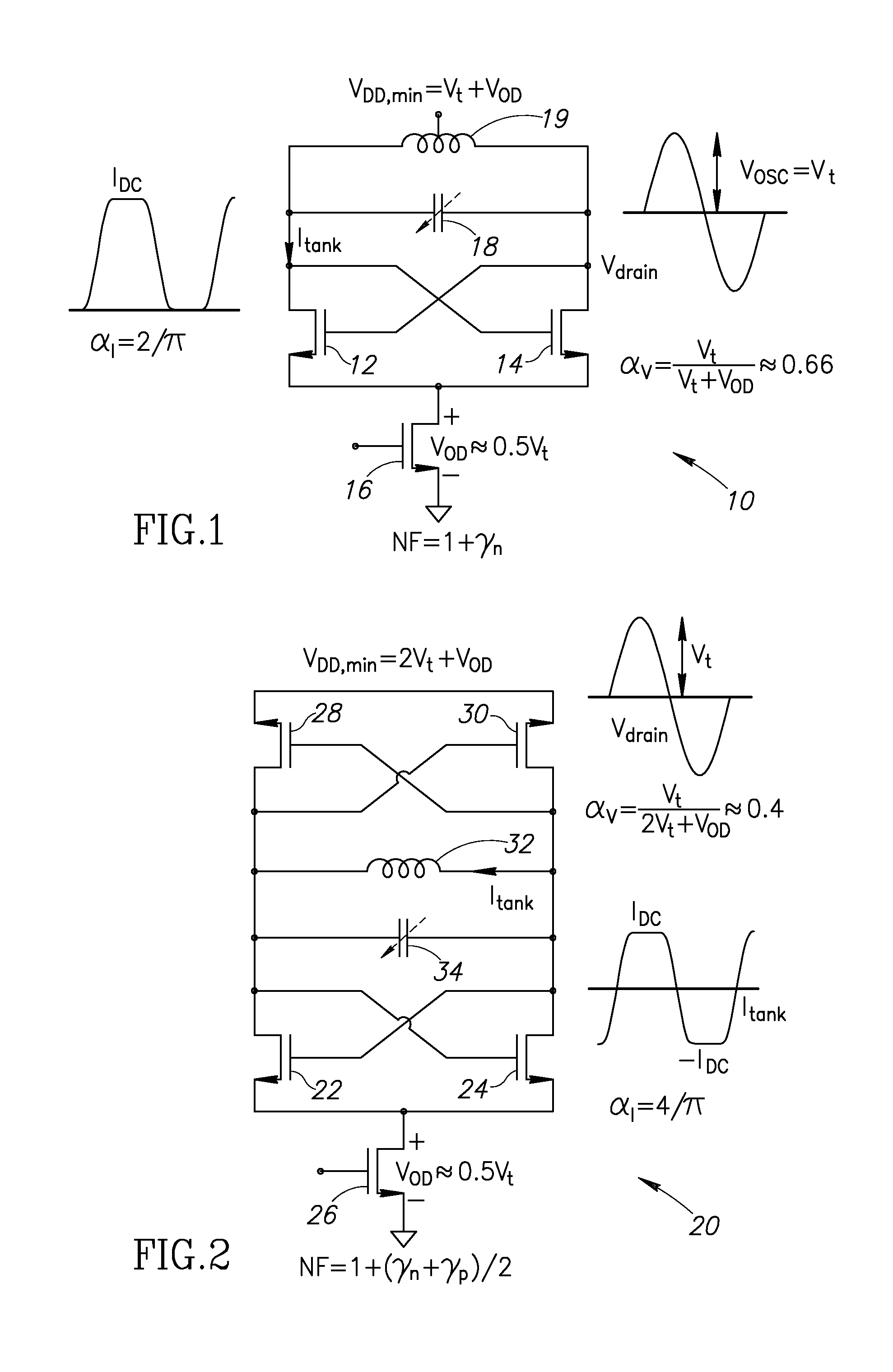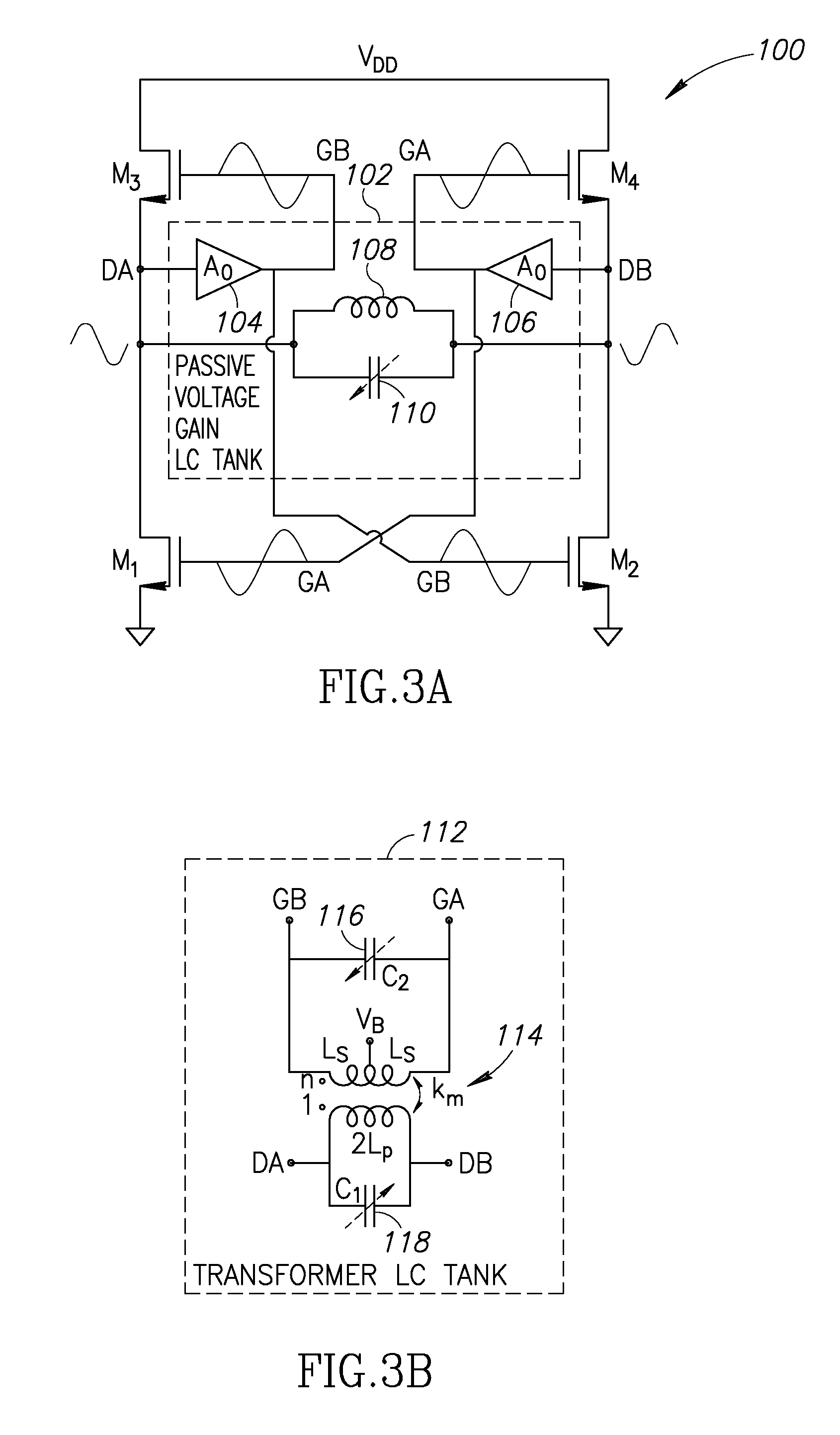Switching Current Source Radio Frequency Oscillator
a radio frequency oscillator and current source technology, applied in the direction of oscillation generators, pulse automatic control, resonance circuit tuning, etc., can solve the problems of transceiver power consumption, high current efficiency, and the expected explosion of the iot, so as to reduce the noise upconversion of 1/f, the effect of low supply voltage operation and high current efficiency
- Summary
- Abstract
- Description
- Claims
- Application Information
AI Technical Summary
Benefits of technology
Problems solved by technology
Method used
Image
Examples
Embodiment Construction
Oscillator Power Consumption Tradeoffs
[0037]The phase noise (PN) of the traditional oscillator (i.e. class-B) with an ideal current source at an offset frequency Δω from its resonating frequency ω0 can be expressed as
ℒ(Δω)=10log10(KT2Qt2αjαVPDC(1+γ)(ω0Δω)2)(1)
where, Qt is the LC-tank quality factor; αI is the current efficiency, defined as ratio of the fundamental current harmonic Iω0 over the oscillator DC current IDC; and αv is the voltage efficiency, defined as ratio of the drain oscillation amplitude Vosc (single-ended) over the supply voltage VDD. As a consequence, Vosc can be calculated by one of the following equations
Vosc=αVVDD=RinIω0=RinαIIDC (2)
where, Rin is an equivalent input parallel resistance of the tank modeling its losses. Equation 1 demonstrates a trade-off between power consumption PDC and phase noise (PN). The PN requirements are relatively trivial for IoT applications and can be easily met by LC oscillators as long as the Barkhausen start-up criterion is satisf...
PUM
 Login to View More
Login to View More Abstract
Description
Claims
Application Information
 Login to View More
Login to View More - R&D
- Intellectual Property
- Life Sciences
- Materials
- Tech Scout
- Unparalleled Data Quality
- Higher Quality Content
- 60% Fewer Hallucinations
Browse by: Latest US Patents, China's latest patents, Technical Efficacy Thesaurus, Application Domain, Technology Topic, Popular Technical Reports.
© 2025 PatSnap. All rights reserved.Legal|Privacy policy|Modern Slavery Act Transparency Statement|Sitemap|About US| Contact US: help@patsnap.com



